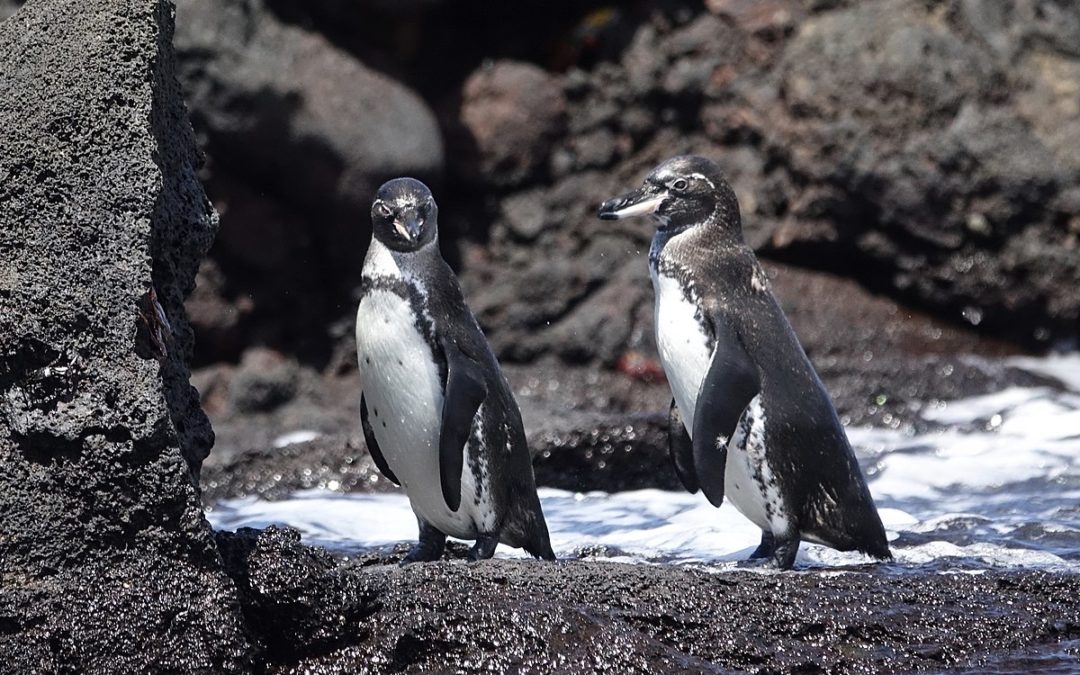By Bree DeLuca
All but one species of penguin live exclusively in the southern hemisphere. The outlier is the Galapagos penguins, which also happens to be the RAREST breed in the whole world!
These interesting flightless birds live right at the Equator on the Galapagos Islands. This is the farthest north of any species, and one of the warmest climates that any penguins in the wild live in! They are one of the only species of penguins who utilize opportunistic breeding which allows them to breed whenever is convenient for them, rather than during specific “seasons” like most other penguins. This allows them to mate when there is more food available since the environment can be unpredictable.
One of the biggest threats to these small penguins is not actually a predator (though they do have those), but the weather. El Nino years in the past have dramatically decreased the populations, and since those times they have struggled to make a comeback. In 1982-83, their population decreased 77%, and then in 1997-98 it decreased another 65% due to the unusually warm waters which deterred their main food sources and made survival a struggle, let alone breeding successfully.
There are an estimated 1200 Galapagos penguins left in the wild, but with the help of some dedicated people who want to see that number increase, some efforts have been made to help them get a step in the right direction. They are a protected species and their main breeding sites are also protected areas, but an even greater help has been a team of researchers building shady artificial nest sites to replace the natural ones that were destroyed by weather.
The penguins in the colder climates tend to make their nests right in the open since they don’t have predators and their bodies are designed for the cold, but since the Galapagos Islands are much, much warmer than the arctic, these penguins have to find shady, cooler spots to nest and protect their eggs, such as small caves and caverns. Having people create more of these has allowed them to be more successful for breeding, and based on the continued monitoring of the nests and population, the researchers have determined that these nests have “accounted for up to 43% of penguin breeding activity”.
Hopefully with the help of dedicated teams like that one, the population of the rarest penguins in the world will start to finally increase!

